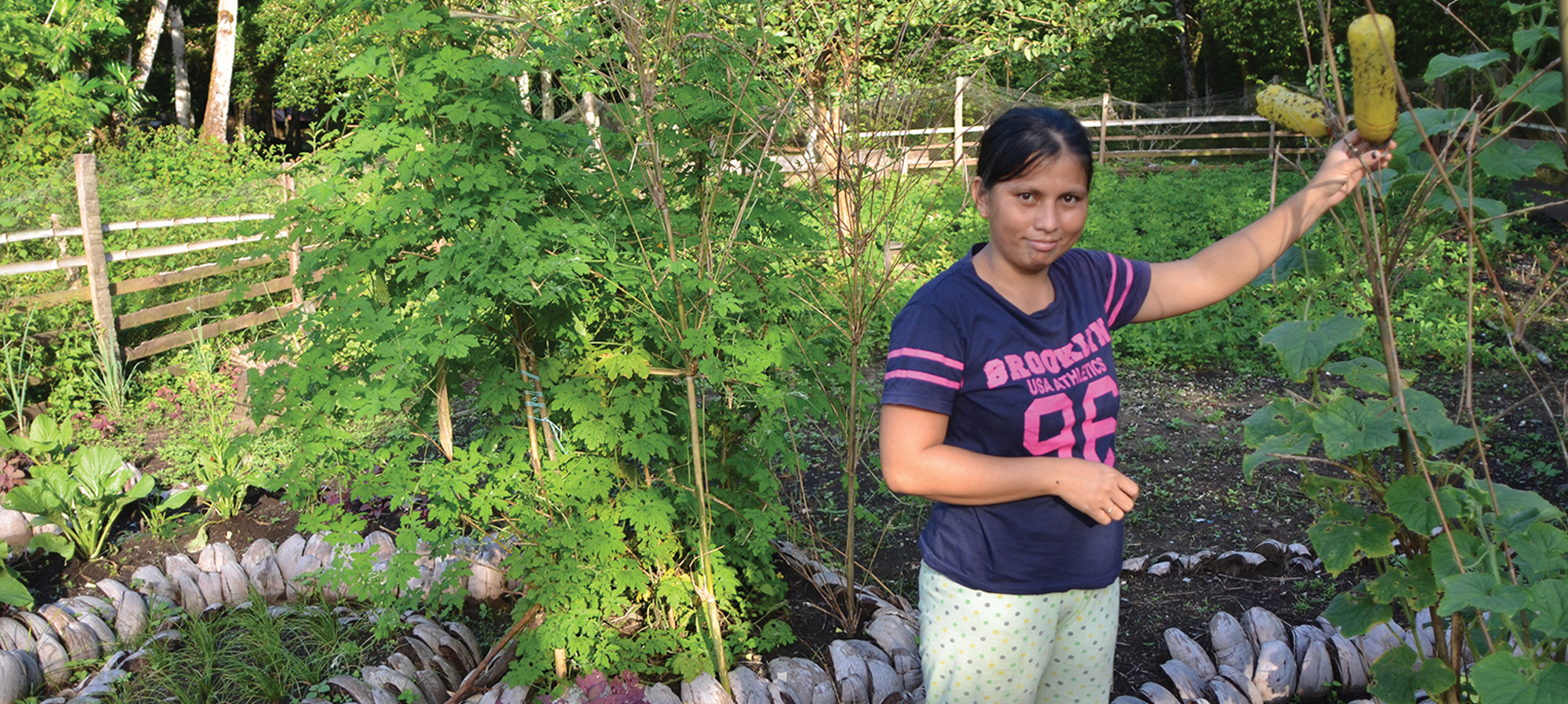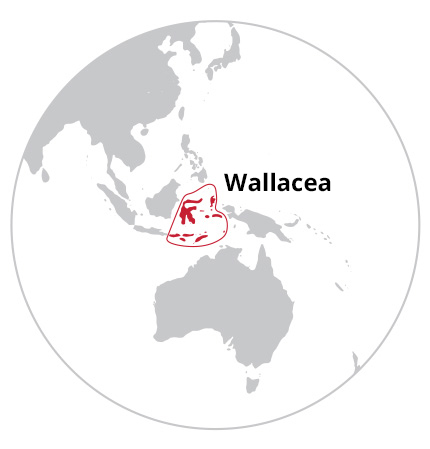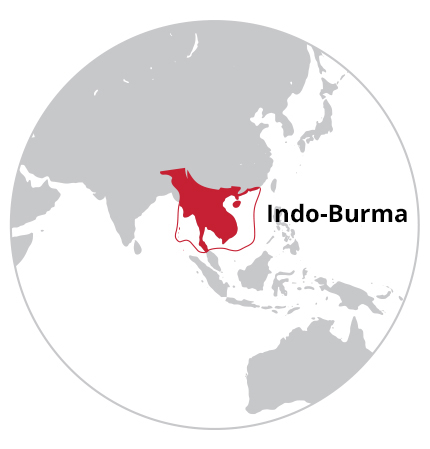Enhancing community benefits from biodiversity conservation
CEPF conservation strategies are driven in part by the concerns of local communities, and many projects funded by CEPF pursue opportunities to meet the immediate needs of these communities while ensuring a healthier future for them and their ecosystems.
Wallacea Biodiversity Hotspot
The Indonesian island of Karakalang, in the northern part of the Celebes Sea, faces an unusual problem. Its clear waters and beautiful white sands are well known in the region, yet the island is too remote to sustain an economy through ecotourism.
Karakalang hosts rich ecosystems that are home to threatened biodiversity, including bird species such as the Endangered Talaud rail (Gymnocrex talaudensis), the blue-naped parrot (Tanygnathus lucionensis) and the Endangerd red-and-blue lory (Eos histrio).
One solution to the island’s economic challenge that is also friendly to its biodiversity is permaculture—sustainable, self-sufficient agricultural systems.
With support from CEPF grants, Indonesian nongovernmental organization Yayasan IDEP Selaras Alam (known as IDEP) is promoting permaculture among Karakalang’s population. A grant in 2015 helped the organization create a five-zone permaculture system in Rae, Bengel and Ambela villages: Zone 1 for homes and household gardens, Zone 2 for household cash crops, Zone 3 for community farms or gardens, Zone 4 for a protective buffer, and Zone 5 for conservation of wildlife.
Through a second CEPF grant in 2016, the project expanded to Ensem and Tuabatu villages.
These villages face such challenges as soil erosion, pests like the sexava grasshopper, and degraded watersheds resulting from forest clearing for farming. The permaculture approach helps address these problems by more carefully managing the land and avoiding the use of chemical fertilizers and pesticides.
IDEP is encouraging collaboration among the villages, building local capacity for sustainable natural resources management, and working with government agencies to adopt, acknowledge and replicate project successes.
“CEPF made it possible for IDEP to reach communities in the Talaud Archipelago so that they know, understand, and are able to convert to sustainable livelihood practices and do conservation work at the same time,” said Sri Handavani, support coordinator for IDEP. Men, women, youths and school children from the villages have all gotten involved in the project.
It’s a win-win. Talaud’s resources are being more effectively managed while the economy gets a boost from the export of responsibly sourced commodities produced via permaculture, such as clove, nutmeg, vegetable chips and virgin coconut oil.
At least 15 hectares per village have been converted to organic farming practices, with more than 50 families in each village cultivating home gardens to provide nutritious food for their families.
Indo-Burma Biodiversity Hotspot

In Lao People’s Democratic Republic (PDR), 54 percent of the country’s wealth is estimated to come from natural resources, particularly via hydropower, making conservation crucial to both the country’s natural and economic health.
Over the past two decades, conservation efforts in the Lower Mekong Basin, which includes some of world’s most biodiverse ecosystems, have produced positive results. To build on these efforts, however, while ensuring that development is sustainable and benefits communities, additional funding and tools are required.
One potential solution is payment for ecosystem services (PES) agreements. Such agreements tap users of “services” resulting from ecosystems—such as the provision of fresh water for hydropower—to pay those who own and/or manage the ecosystems that deliver those services. Recent regulations and legislative action from the Lao PDR government provided an opportunity for developing national standards for PES agreements. CEPF grantee Wildlife Conservation Society (WCS) took action, piloting a PES model with communities living upstream of the Nam Gnouang dam in Bolikhamxay Province. The goals of the project include conserving and restoring key forest areas—which provide habitat for many species, including the Critically Endangered saola (Pseudoryx nghetinhensis)—and influencing the developing national policy on PES to emphasize proper valuation of ecosystems, community empowerment and private sector best practices.
WCS identified two communities, Nacheng and Khamkhuna villages, that were interested in participating in a PES agreement and had forest areas that met the project criteria. WCS, local authorities and the villagers mapped out the forest plots and developed management plans. In 2018, the communities and the project signed pilot agreements to protect and restore 1,870 hectares of forest in exchange for payments that can be used for activities selected by the community. The overall goal of the management plan is to facilitate natural regeneration of secondary forests and fallows through the reduction, and where appropriate, banning, of activities such as logging, livestock raising and swidden agriculture, which typically involves using fire to clear land. Endorsement by local authorities validates the creation of village protection forests and aligns with the national strategy to protect watersheds and forest cover.
The hope is that, if these pilot agreements prove to be effective, they can be sustained or expanded to other villages by the Theun-Hinboun Power Company, which operates the dam, or by the government.
In an area that struggles with poverty, this source of additional income can make a significant difference.
“The pilot model is promising and has been warmly welcomed by both communities and local authorities. Payments are substantial and provide an opportunity that the community would not have otherwise.”
“The pilot model is promising and has been warmly welcomed by both communities and local authorities,” said David Lety, WCS technical director for the Bolikhamxay landscape. “Payments are substantial and provide an opportunity that the community would not have otherwise.”
The villagers have, for example, decided to finance improvement and expansion of their water supply system and to set up revolving funds to develop improved cattle raising systems.
Photo Credits
Permaculture project participant Lisa Manembu tends a garden on Karakalang Island. © IDEP Foundation/Image by Gede Sugiarta
Rice paddy outside Khamkhuna Village, Lao PDR. © Olivier Langrand






